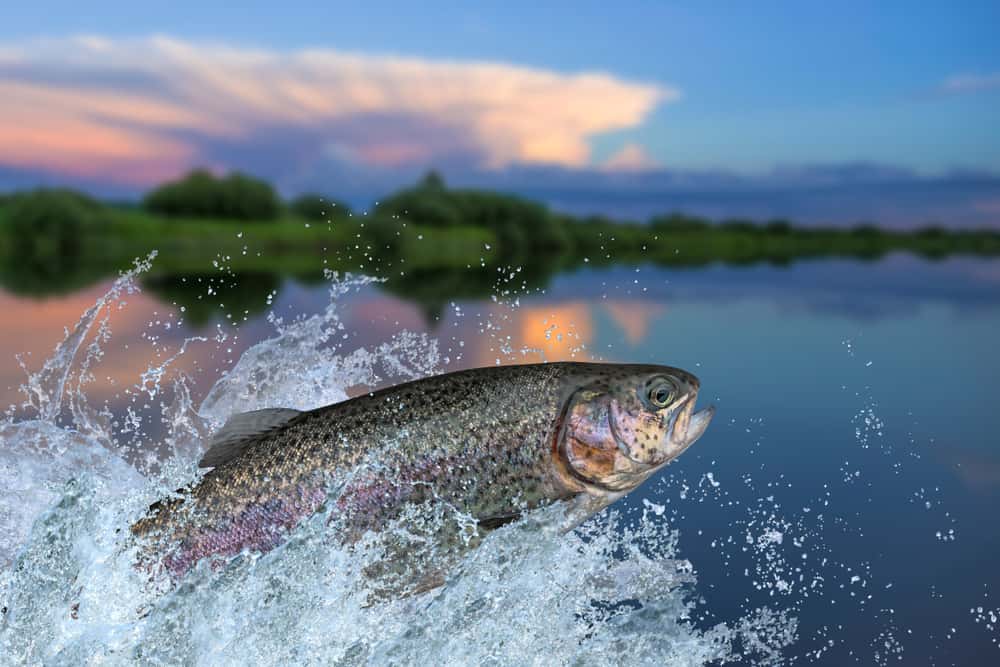Trout fishing is popular in many parts of the world, and here in the States is not an exception, in fact, many communities are very devoted to trout fishing like the ones you can find in West Yellowstone, Mont., Missoula, Mont., Roscoe, N.Y., and plenty more. Although experienced fly fishermen find it challenging at times, it is an emotionally charged experience for hundreds of anglers.
Trout is one of the most sought-after game fish species, although a great set of skills to fish them is required. Why is that? Because these are pretty sneaky, sometimes they eat the bait without even disturbing the water.
Furthermore, if you catch them, you can be sure they will fight back if you pull them. Likewise, there are different types of trout; therefore, it is necessary to have a good understanding of the different types that exist if you want to fish effectively.
They possess different behaviors and dietary preferences; if these are not known, you will have less probability of getting them. Because of this, I made the following trout feeding guide; I hope it is helpful to you.
What Do Trout Eat?
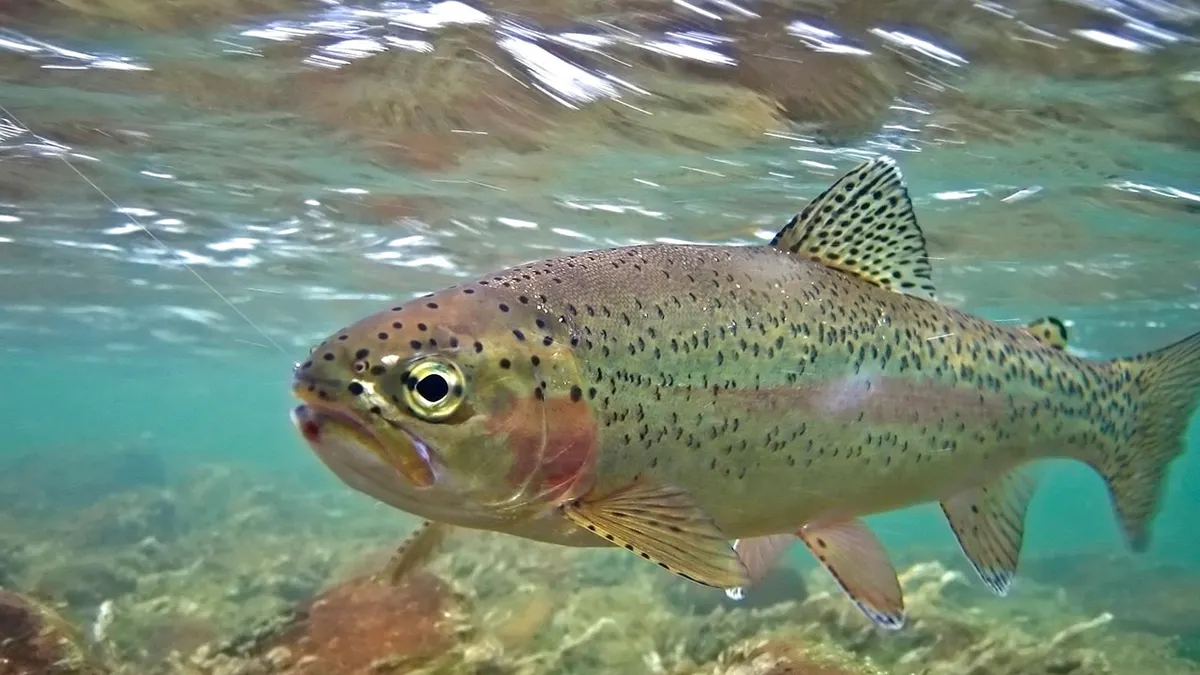
The trout diet is quite diverse; these fishes can be described as opportunistic but at the same time selective. Therefore, they can eat a little bit of everything, but it depends on where they live and the time of the year; this is where the importance of being well informed before going out to fish for these elusive fish lies.
Now, when it comes to the diet of the trout, the basis of their diet is generally composed of crustaceans, algae, aquatic insects like mayflies, leeches, worms, and even frogs; but this can be determined if the trout is:
Captive trout
It is crucial noticing that before starting to check the diet of a captive trout, we need to know that in order to keep these kinds of fishes in captivity, it is necessary to examine all the legal matters that this merits, since in significant part of The United States is illegal to keep native fishes in private properties without the corresponding permits, having said that, the trout generally kept in captivity are the Brown trout (Salmo trutta) and the Rainbow trout (Oncorhynchus mykiss).
- Brown trout: In the case of this one, it is originally from Europe, spanning a native range from Norway, Russia, North Africa, Iceland, Pakistan, and Afghanistan. But currently, they have also developed in North and South America.
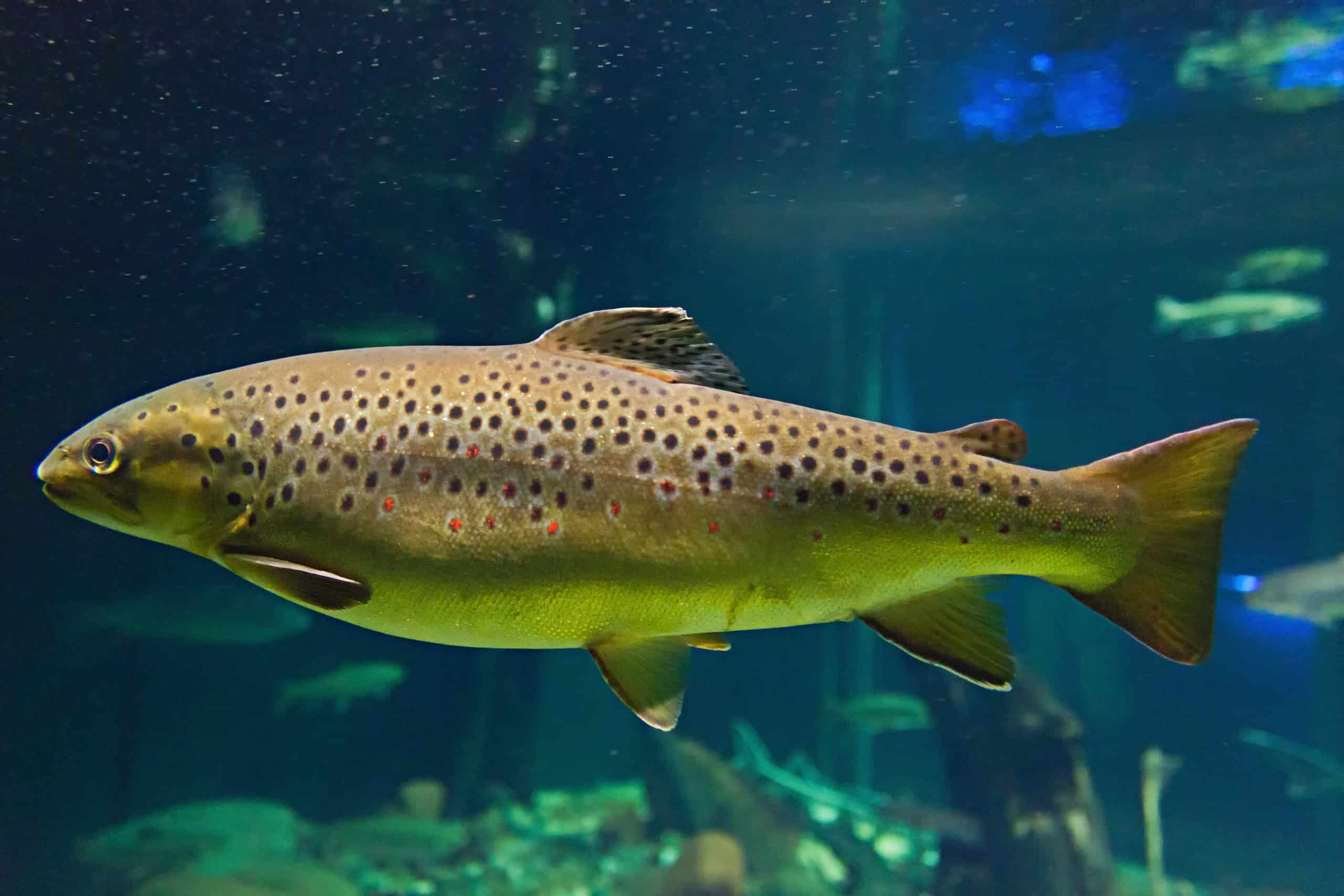
This trout is highly dominant and adaptable, so it makes its own habitat where it develops; this means that it is capable of driving out other native species, either by competing for resources or by preying on its competition.
Their behavior is highly aggressive, making them the most aggressive river trout and the most calmed lake trout. In the case of being captive, its aggressiveness may increase and even sky-rocket if it is in a narrow space, which is why, if captive, it is recommended to keep them in a very large space for them to swim at ease.
Now then, getting into the subject of food, the brown trout survives by a diet rich in insects, shrimp, and flies. In addition to some small fishes, they can even prey on baby trout when they have reached maturity; in fact, this trout species, in particular, has been shown to be as aggressive as eating grown mice.
- Rainbow trout: The rainbow trout is originally from Asia and North America. But, they extended into many parts of the world due to their introduction in sport fishing and as a food fish.
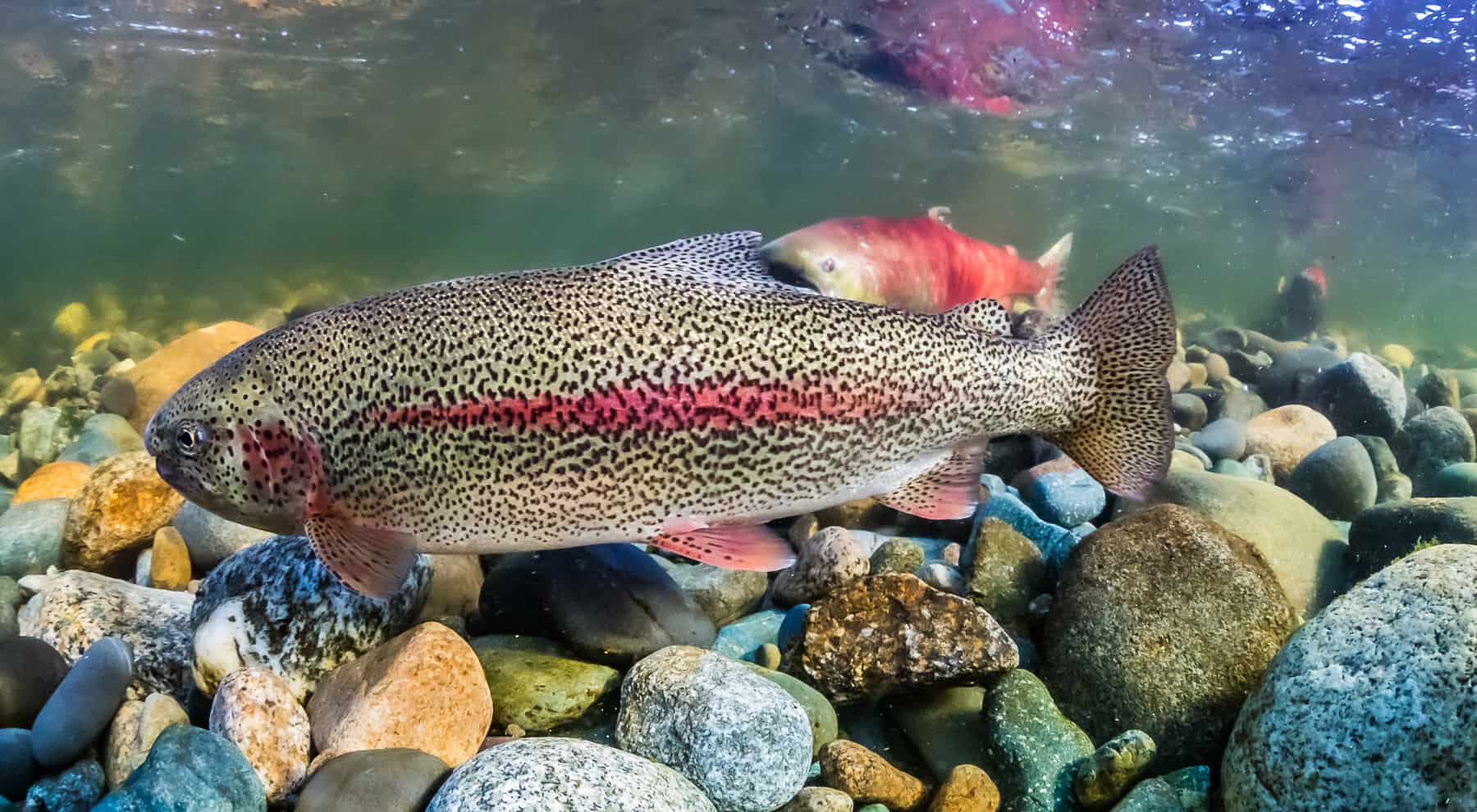
When it comes to feeding, the rainbow trout has a significant tendency to feed on the water’s surface and enjoys open water. Therefore, if kept in captivity, it is best to keep it with other rainbow trout since the presence of different kinds of fish can be dangerous, like the brown trout, a dominant fish species.
Their diet is similar to other kinds of trout, whose main foods are insect species that inhabit the surface, smaller fishes, fish eggs, and even plankton.
It is worth noting that in both cases, trout farmers supplement their trout’s feed by adding high-quality fish feeds for trout. Currently, fishmeal is rich in protein, but its ability to be digested by trout has been improved, adding an increased energy level to their diet, however, it is recommended to not feed them on fishmeal alone, include variety in their diet to make it more nutritious and rich.
Wild trout
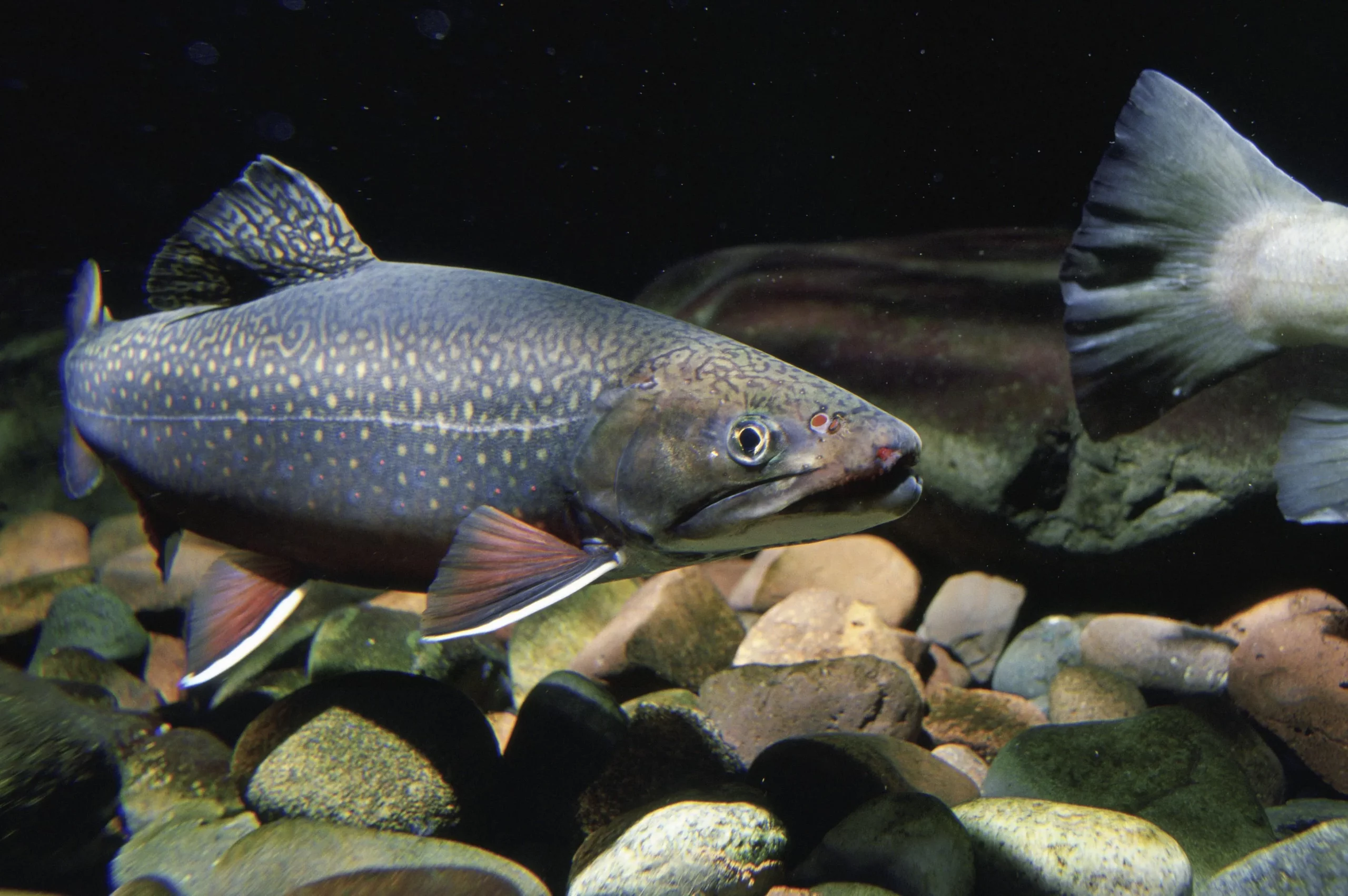
The trout feeding may vary depending on the type of trout you are looking for and the country you are fishing in. However, there are certain unmissable treats in the diet of any trout. These are:
- Insects: Insects are – as candy is to children- an irresistible snack for trout; these are everywhere in the rivers, so they are one of the most preferred snacks. But, most of the insects that are eaten by trout originate below the surface of the water.
In this regard, nymphs and larvae (depending on the larval stage) are more frequent and conform to the primary basis of the trout’s diet. In addition, it is worth mentioning its preference for ephemera; these have played a significant and essential role in sport fishing because they are a primordial source of food in all trout waters.
- Eggs: Eggs are also very attractive for trout, which enjoy eating different species. Nevertheless, the ephemera adult females have the habit of depositing their eggs on and under the water surface.
This causes the eggs to sink and adhere to the ferns of the stream or at the bottom of the lake, making them vulnerable to the appetite of the trout, who even eat the nymphs when they come out of the egg. Talk about opportunism!
- Trichoptera insects: Known as Caddis flies which have a formation of ten when their wings are at rest. These possess a wide variety of species and inhabit large quantities in aquatic environments. For this reason, it is said that trout eat Trichoptera insects in huge amounts.
- Crustaceans: Shrimps, mealybugs, and crayfishes thrive fruitfully in the reservoirs, thus flowing into the river and becoming essential elements in the diet of the trout.
- Leeches: These are an excellent food for the trout since they are kept in water, move at a very slow pace, and are full of calories; these are some of the more significant trout favorites, making it an almost infallible food as bait.
- Other common foods: Crabs, snails, spiders, ants, dragonflies, rodents, eels, worms, trout eggs, other younger trout, and smaller fish.
Baby trout
As well as mature trout, baby trout eat many kinds of food, especially insects like crickets, grasshoppers, and dragonflies. But they may also eat worms such as earthworms, night crawlers, and mealworms, among others. The extra thing here is that baby trout can become the food of full mature trout.
What Do Different Types of Trout Eat?
A more detailed description of what trout can eat depending on the type is given below:
- Brook trout: You can find these in the midwestern United States, although they are also located in eastern Canada. When these trout are young, their diet consists of only plankton, but as it grows, their diet diversifies, adding foods like frogs, leeches, worms, larvae, crayfish, and snails.
- Lake trout: This type of trout is one of the bigger ones you can find in North America, particularly in Canada. These large trout can weigh more than 100 pounds, so there are very few things they cannot eat. Some of their main foods are crabs, insects, plankton, lake herrings, smelt, and freshwater sponges.
- Cutthroat trout: These trout are pretty easy to distinguish due to their appearance, their name is derived from the distinctive red bars around their necks. In general, they are found in the west of The United States and Canada. Their diet when they are young consists of insect larvae, but once they grow up, they add fish eggs, snails, salmon, herrings, squids and other crustaceans, krill, and a variety of insects to their diet.
- Bull trout: This is originally from the northeast of the Pacific, prevailing in the north of Canada. Unlike the previous ones, bull trout do not tend to eat all kinds of ailments but rather prefer salmon, smaller trout, and white fish (flies are not their main source of food); these have like a more refined food choice to put into words.
- Golden trout: This is one of the weirdest species in all of North America, whose location is limited only to the California streams and the Sierra Nevada mountain ranges. Its appearance is pretty striking, but they possess smaller size, which conditions their diet to small foods such as midges, insect larvae, Trichoptera, and freshwater shrimp.
- Arctic char: The arctic char is frequently found in the north. Due to the area where they inhabit, their diet varies according to the time of the year. In winter, they feed on plankton, small fishes, and shrimps; on the other hand, when summer arrives, their diet is conformed of insects, insect larvae, small fishes, shrimps, snails, small shellfish, and salmon eggs.
- Dolly Varden trout: This one is kind of like a variant of the Rainbow trout, but it lives in lakes in temperate climates. Its color varies from beautiful light green to dark green depending on the time of the year and place. During its youth, the Dolly Varden trout follows the salmon, eats its eggs, and keeps following it. But once they are in their adult stage, they can eat a variety of foods, including other trout species.
- Splake or slake: This is known as a hybrid species that originated in Canada and whose reproduction process is supported by the country’s government. Its name is derived from a combination of lake trout and speckled trout, but this hybrid creature resulted from a combination of a lake trout with a brook trout. Like its progenitors, this one has a diversified diet, where insects, crabs, crayfishes, plankton, and small fishes are their most common meals.
- Spotted or Speckled trout: This one is found mainly in coastal waters of the southeastern United States. It is one of the largest trout and is a mimetic fish, so it can take a different appearance according to the color of the ground and the water, which also helps them to conceal themselves from predators and hunt as well; while being a subtropical and demersal fish, it is found in shallow coastal waters; it usually can eat shrimps, crustaceans, but also enjoys eating other fishes.
How Much Do Trout Eat?
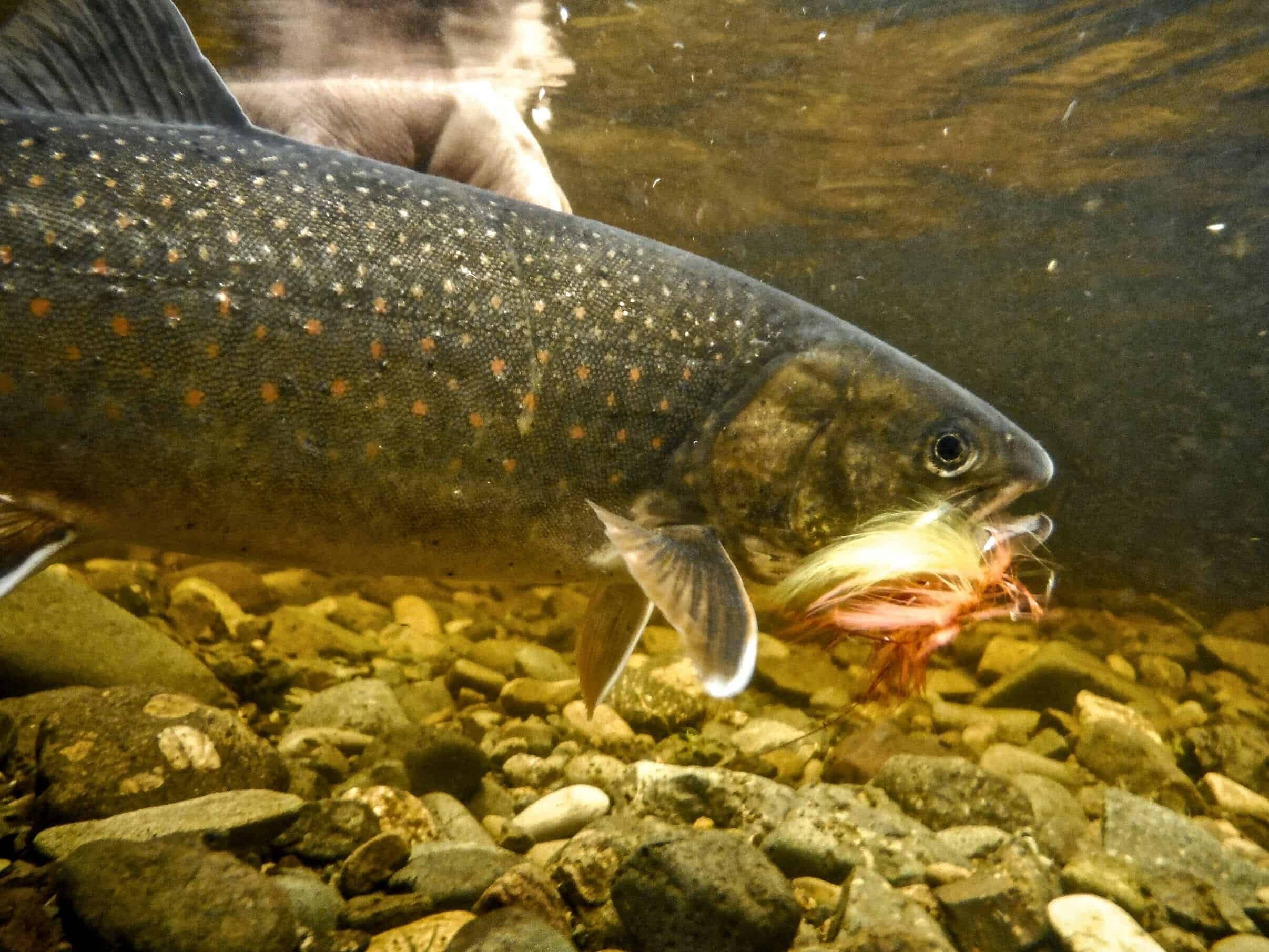
In order to know how much a trout consumes, we have to take into consideration many factors, like the size of the fish, time of the year, and the trout’s life cycle; this is because the smaller the trout, the more food it must ingest to stimulate its growth (the irony).
In this regard, it is vital to notice that young trout possess a speedy metabolism, so they keep eating a lot of food throughout the day. Therefore, it may be difficult to calculate exactly how much they should or could eat. Likewise, it is worth noting that the warmer the water the trout swims in, the more food the trout will consume during the day, so definitely their diet depends on many different factors.
It is estimated that during the warmer months, trout need to eat constantly during the day; on the other hand, during the winter season, trout can eat up to only 1% of their weight every day without affecting it. Not to mention that the more mature the trout is, the less food it requires to stay alive.
In Conclusion
Trout fishing and farming continue to expand throughout the United States and the rest of the world. The interest in knowing the different types of trout reveals that you are a new trout fan, either because you want to start fishing them and live an experience full of emotions and skills, or you just love to eat fish.
In this same frame, if you are interested in starting trout farming, do not forget to take the legal provisional measures and inform yourself about the environment, conditions, and food needed for trout farming. That way, you will be able to successfully carry out your project of raising these impressive and strong fish.
Also, trout are impressive and strong fish. So first I recommend you to check the depth of the lake in different areas (trout are usually found in deeper water). Also do your fishing early in the morning or in the evening, when the trout tend to be most active.
F.A.Q
What Do Trout Like to Eat the Most?
As mentioned throughout this article, trout are fish that can eat a variety of foods while being selective with them. But their base diet is conformed of many types of insects, midges, stoneflies, worms, crustaceans, and smaller fishes, including young trout and even mice in some cases.
On the other hand, we also have to mention that the larvae, nymphs, pupae, and eggs are an integral part of the diets of all types of trout. Regarding as to which kinds of food they eat the most, it will really depend on the environment the trout is in, their stage of growth, and their natural size depending on the trout species.
What Is the Rainbow Trout’s Favorite Food?
When it comes to rainbow trout and their favorite snack, it has to be said that they are mosquitoes. These are rich sources of nutrition for rainbow trout. They also complete their diet with larvae, nymphs, and spinners, always present in the water columns, in addition to this, rainbow trout eat mosquito chrysalis, crayfish, crabs, and mosquito chrysalis, small mammals, snails, and mussels.
What Is the Best Bait For Trout?
There is no perfect bait for trout. As already mentioned, it enjoys consuming a variety of foods; in addition, they are different types, with a similar food base, but with preferences governed according to the place and the time of the year they are developing.
For example, in the case of the rainbow trout, mosquitoes and fish that are part of its habitat can perfectly lure them out. On the other hand, Dolly Varden trout prefer salmon eggs as the basis of their main diet.
So, there is no so-called best bait for all trout but the best bait for each. But to find it according to the different types of trout, you must inform yourself and do your homework. To do so, study the ecosystem and feeding behaviors of your targeted trout, if you do so, you may pick the most appetizing bait and increase your chances of capturing a quite elusive fish.
